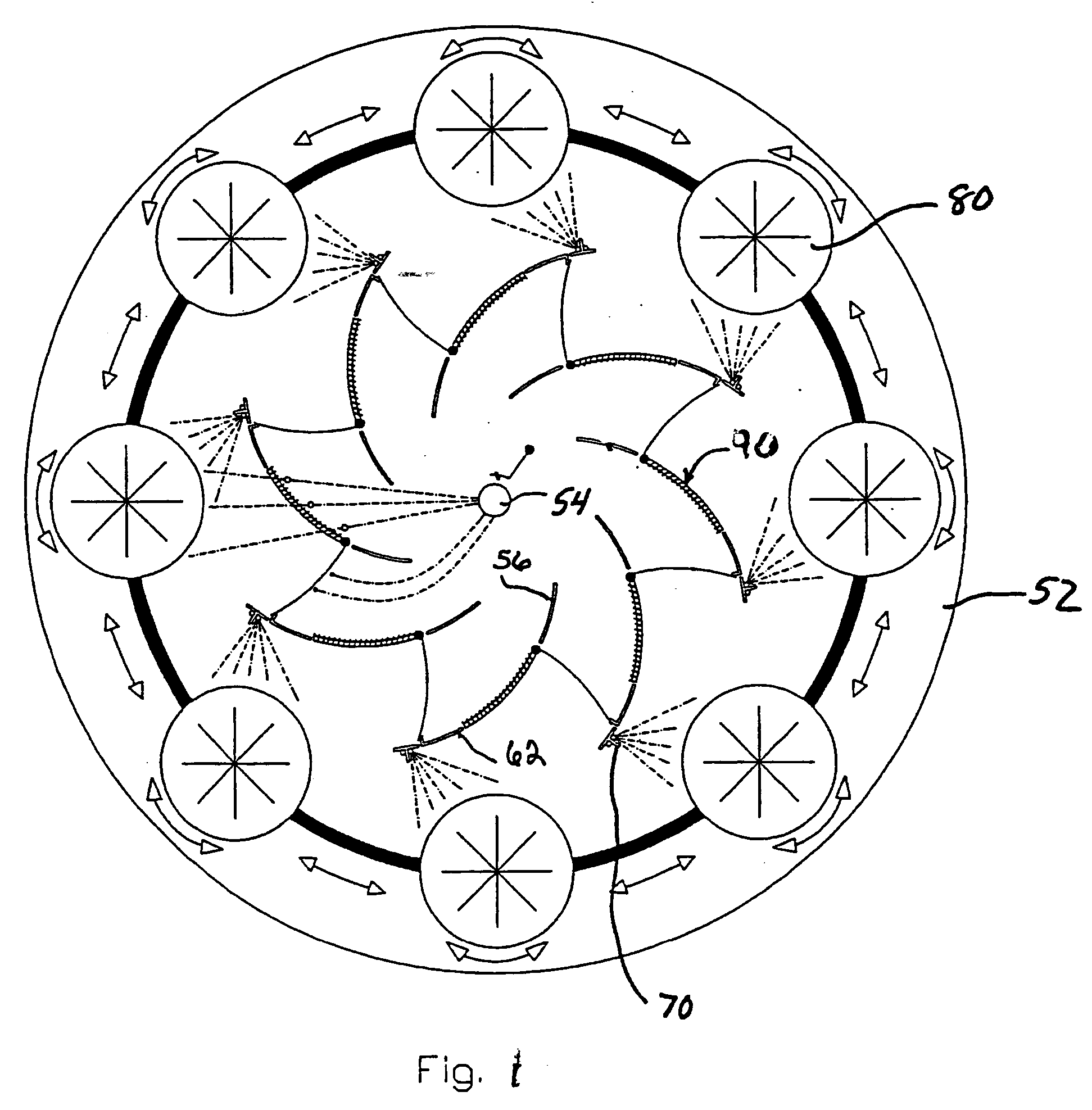Ionic plasma deposition of anti-microbial surfaces and the anti-microbial surfaces resulting therefrom
a technology of anti-microbial surfaces and ionic plasma, which is applied in the direction of make-up, vacuum evaporation coating, biocide, etc., can solve the problems of reducing the reactivity and solubility of most anti-microbial applications, and affecting the effect of anti-microbial activity
- Summary
- Abstract
- Description
- Claims
- Application Information
AI Technical Summary
Benefits of technology
Problems solved by technology
Method used
Image
Examples
example
[0036] The ionic plasma deposition device illustrated in FIG. 1 is used to deposit an anti-microbial surface onto a propropylene mesh typically used for hernia repair. A cathode of medical grade (99.99% purity) silver is placed into the vacuum chamber and the polypropylene mesh substrate is placed onto the turntable. The vacuum chamber is them pumped to a pressure of 20 mT. The current supplied to the cathode is 100 amps to generate an electric arc to ionize the silver into plasma particles. The current supplied to the first anode is 50 amps at a voltage that floats between 54 and 75 volts, and the current to the second anode is 25 amps at a voltage of 26 volts. Oxygen is introduced into the plasma at a rate of 50 sccm. The deposition process takes place at ambient temperature. After 40 seconds of deposition time, a dispersion of silver oxide particles is deposited onto the surface of the polypropylene mesh substrate. The silver oxide particles form an effective anti-microbial surfa...
PUM
| Property | Measurement | Unit |
|---|---|---|
| Time | aaaaa | aaaaa |
Abstract
Description
Claims
Application Information
 Login to View More
Login to View More - R&D
- Intellectual Property
- Life Sciences
- Materials
- Tech Scout
- Unparalleled Data Quality
- Higher Quality Content
- 60% Fewer Hallucinations
Browse by: Latest US Patents, China's latest patents, Technical Efficacy Thesaurus, Application Domain, Technology Topic, Popular Technical Reports.
© 2025 PatSnap. All rights reserved.Legal|Privacy policy|Modern Slavery Act Transparency Statement|Sitemap|About US| Contact US: help@patsnap.com

